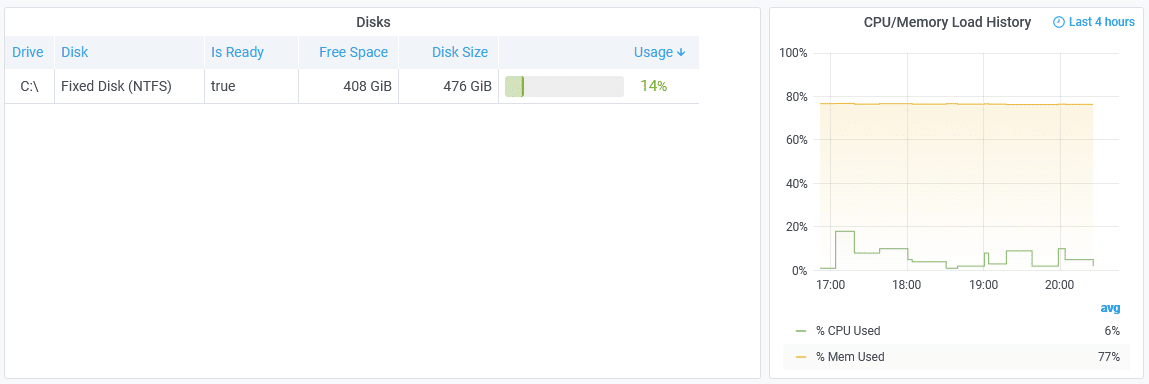OfficeExpert Use Case
Which Computers Are Too Old and Slow
Using slow, legacy computers with minimum memory installed, can seriously impact the user experience and performance of Microsoft Teams voice and video calls. The standard Microsoft monitoring tools do not provide the information needed to identify the root cause for bad Teams call quality from underperforming hardware. OfficeExpert TrueDEM monitors endpoint performance and will quickly spotlight slow, overloaded computers to alert IT admins about necessary upgrades.
Proactively Identifying Poor Performance from Legacy Hardware
Without the appropriate speed and memory allocation on laptops or home office computers, employees will often experience poor call quality. This is due to the speed at which voice signals can be converted into digital format and compressed to transfer quickly over the internet from the sending computer or unpacked and translated into audible sound on the receiving computer. This process is performed by Codecs which are small software programs, or algorithms, that convert an analog voice signal to a digitally encoded version. The slower the computer the bigger the impact on call quality and the overall performance of Teams voice/video for end users. Simply put, Codecs are standards used to digitize audio for VoIP calling.
Driven by the trend of more and more employees using Microsoft Teams as their standard voice/video calling platform while working remote or in dispersed teams, there is a growing need for corporate IT groups to quickly identify users who’s slow or underperforming computers negatively impact their experience and productivity. At the same time, indiscriminately replacing older computers with new ones, solely based on the computers age is expensive and not always needed to cover the users’ needs. It also won’t guarantee that all systems with problems are replaced as sometimes younger systems can have problems supporting the needs of an intensely used Microsoft Teams as well.
Identifying users with problems proactively and upgrading their computers will help increase the use of Teams as their core communication tool while at the same time allowing a more gradual and need-based replacement of systems for others.
Business Challenges for Monitoring Home Office Networking Performance
Very few IT groups gather accurate information on end user computer performance. Which means that most organizations are guessing when it comes to the lagging CPU speeds and memory bottlenecks from legacy hardware. They know they have old computers that needs to be replaced, but they cannot easily identify which of these are causing the most issues and should be first in line for upgrades and which could perhaps remain in use a little longer.
What if there was a simple way to monitor and track the computer performance for all your user devices?
The latest version of OfficeExpert TrueDEM provides the information needed to proactively monitor laptop / desktop computer performance for employees. Its endpoint performance monitoring capabilities allow you to quickly identify a wide range of technical issues that could cause degrading computer performance. The solution includes a small data gathering agent that can be easily installed to end-user devices using any software deployment tool (i.e. System Center Config Manager, Microsoft Endpoint Manager / Intune, On-Premises Active Directory Group Policy, etc.)
Business Value from Upgrading Legacy Hardware
Since the onset of the COVID-19 pandemic most organizations have transitioned to a work-from-home or work-from-anywhere business model for a large portion of their employees. And working remotely has been assisted by technologies like Microsoft Teams that include online chat and enable voice/video conferencing using VoIP. But all those capabilities rely on having consistent and reliable performance from each employee’s work computer.
With VoIP, quality of service (QoS) simply means being able to listen and speak in a clear and continuous way, without unwanted noise or other distortions. Acceptable QoS depends on the technical parameters of delay, jitter and packet loss. In VoIP a delay of 150ms is acceptable, while a higher value results in degradation of voice quality, which becomes unacceptable at values higher than 300 ms. Without dependable QoS there will be a backlash against the digital adoption for Teams. It has a direct correlation to the employees’ positive impact. If they are experiencing poor call quality, or dropped calls, they will be less inclined to embrace the use of Teams for their daily communications and collaboration activities. Quickly identifying those users with older computers and getting them the necessary upgrades will greatly improve the adoption of Microsoft Teams company wide.

